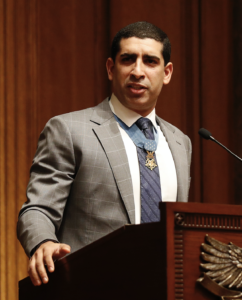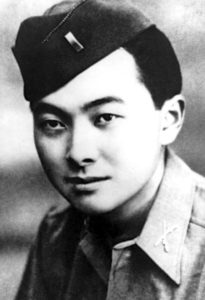Normandy Campaign – Battle for Carentan
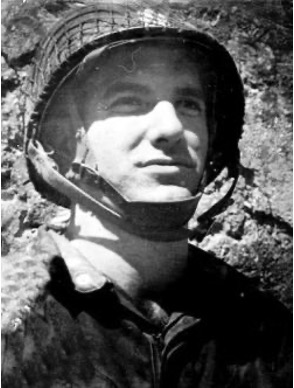
For an amphibious assault to succeed it is vital that the landing force quickly secure the beachhead to land additional forces and enough ground beyond to resist counterattacks. On June 7, 1944 (D+1) along the Normandy coast, there was growing concern that the Americans were well behind in this essential goal. One of the basic needs for the American forces was to unify the Utah and Omaha beachheads. To do this, the Americans needed to seize the small French town of Carentan. And it was on June 8 (D+3) that General Omar Bradley ordered the 101st Airborne Division to secure this strategic location.
The Americans were not the only ones to realize the great importance of holding Carentan. With captured plans in their possession, German General Marcks of the 84th German Army Corps ordered Colonel Friedrich von der Heydte and his 6th Parachute Infantry Regiment to hold this town to the last man. Von der Heydte’s paratroopers were some of the toughest men in the German lines. Augmented by artillery, including at least one lethal 88mm anti-tank gun, the Germans dug in and awaited the Americans.
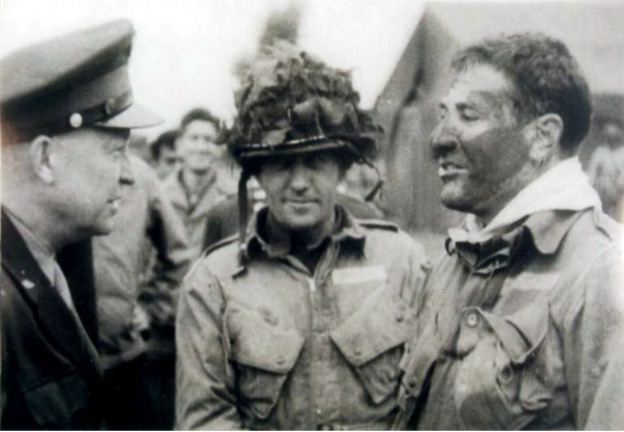
The Carentan Causeway – Purple Heart Lane
The task of attacking and securing Carentan was assigned to Lieutenant Colonel Robert Cole, commander of the 3rd Battalion, 502nd Parachute Infantry, 101st Airborne Division. Cole, a Texan and 1939 West Point graduate, had roughly 700 of his tired and haggard paratroopers readied for the advance. After determining that there were no other viable approach paths, Cole realized that the Carentan Causeway (Highway N-13) – a raised and exposed road surrounded by flooded marshland – was the only way to reach the town. Even worse the men of the 3rd battalion would need to cross over 4 narrow bridges – one of which had been dropped into the Douve River by the Germans – all while being within easy range of German snipers, machine guns, and artillery.
Late on the afternoon of June 10, Cole ordered elements of his command down the causeway towards the objective. As his men made their way over the rickety boards placed over the fallen bridge span at Bridge Two and through a narrow iron gate at Bridge Four, the men came under withering small arms fire from the town and surrounding landscape. Casualties quickly mounted as the survivors sought whatever cover they could find. With the advance at a standstill, Cole moved down the causeway shouting at them to get up and return fire on the enemy positions. As he walked along the exposed causeway what he was confronted by the many dead and wounded. Company I, which started the day with 85 men was down to 23 effectives. An attack by a German Stuka dive bomber only made things worse. During the evening, Cole surveyed the situation. To stay in the current location would leave his men horribly exposed. To retreat would be just as bad. Cole realized that his best option – a grim one – was to order a frontal attack at dawn on the German positions just off the causeway to his front.
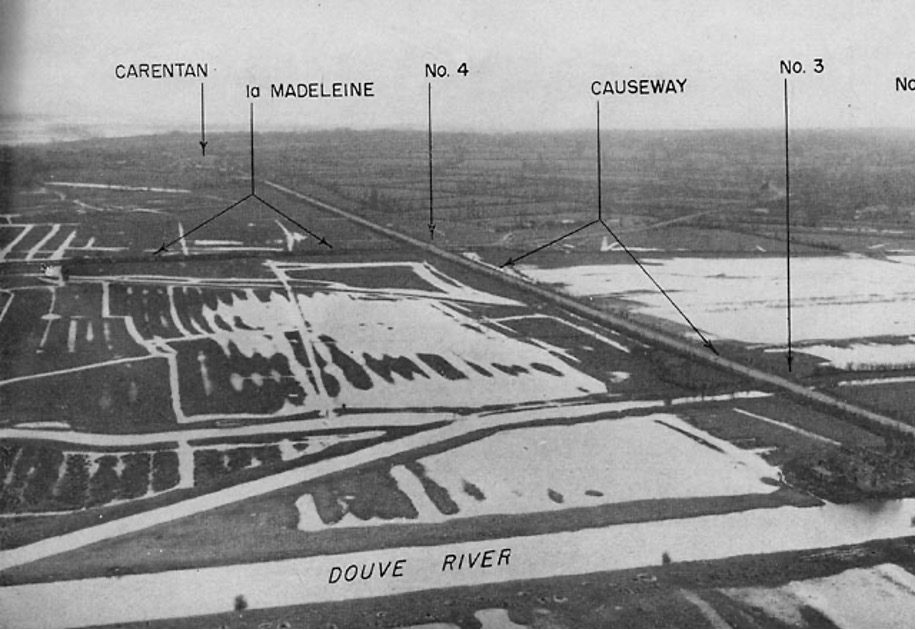
The Bayonet Charge
Having sent the weakened Company I to the rear, Cole brought up three companies (H, G, and headquarters) – 265 men in total – for the morning assault. Ordering the men to fix bayonets and load fresh clips, Cole blew his whistle at 6:15am on June 11 and surged forward towards the German positions in farmhouses and behind hedgerows to their front right. Moving quickly behind a smokescreen laid by American artillery, Cole looked back to find only 20 men following behind him. Had his men failed him at this critical moment? Rather than fear, it was quickly determined that many of his men had just not heard the morning orders. With his second in command, Major John Stopka passing the word, the paratroopers got to their feet and joined their leader.
Cole, leading from the front, jumped a hedge and landed in a water-filled ditch. Crawling free he worked to direct artillery fire and urged his men forward. At one point, Cole could be seen firing his pistol and shouting, “I don’t know what I’m shooting at, but I gotta keep on….We’re about to learn ‘em a lesson!” Those that had made it across the fields and hedgerows engaged the Germans in a bloody, close-quarter battle that ultimately overwhelmed von der Heydte’s crack troops and drove the survivors back.
Disorganized by the assault, Cole’s men, with the help of American artillery, were able to hold back two determined counterattacks by the Germans. With enemy fire now slackening late in the afternoon, Cole sent a runner back to hurry on reinforcements. The 506th Parachute Infantry Regiment crossed the bridges that night to relieve Cole’s worn out unit. That regiment, along with the 327th Glider Infantry Regiment, would take the town the next morning. Thanks to Cole’s attack and his battalion’s sacrifice, the strategic town of Carentan was in American hands. Cole’s men had paid a terrible price for their bravery. Of the 700 men in the 3rd Battalion, just 132 of the “Screaming Eagles” were left standing.
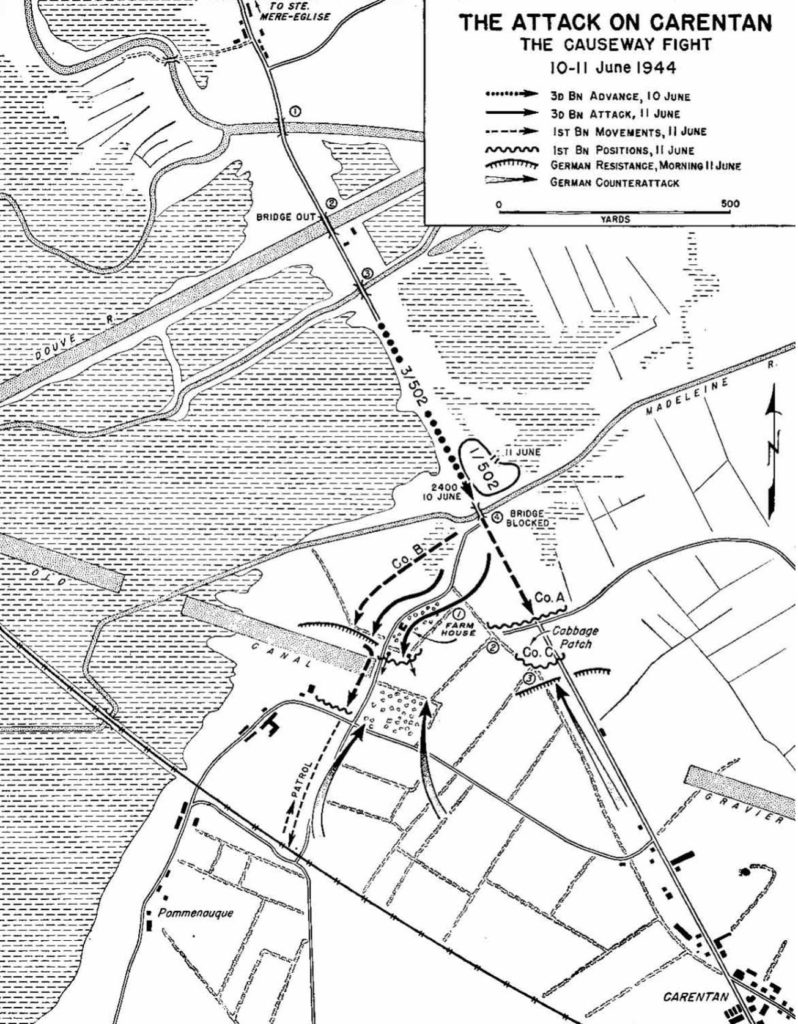
Robert Cole and the Medal of Honor
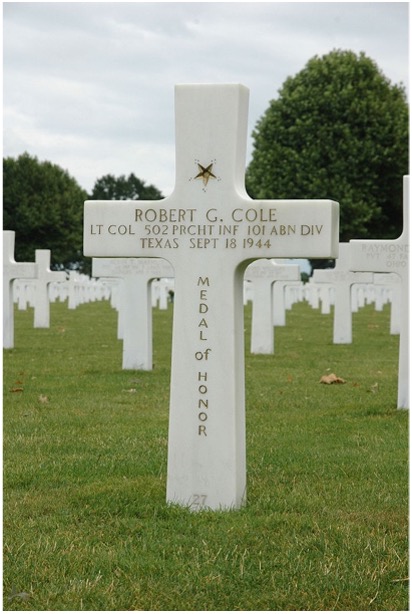
Robert Cole’s brave actions at Carentan led to his being awarded the Medal of Honor on October 4, 1944. Unfortunately, Cole was not able to receive this honor in person. On September 18, 1944, Lieutenant Colonel Cole was shot and killed by a German sniper near the town of Best during Operation Market Garden in the Netherlands. Cole’s widow and two-year old son accepted the Medal of Honor at a ceremony at Fort Sam Houston.
Cole is buried at the Netherlands American Cemetery and Memorial in Margraten.
Medal of Honor Citation
For gallantry and intrepidity at the risk of his own life, above and beyond the call of duty on 11 June 1944, in France. Lt. Col. Cole was personally leading his battalion in forcing the last 4 bridges on the road to Carentan when his entire unit was suddenly pinned to the ground by intense and withering enemy rifle, machinegun, mortar, and artillery fire placed upon them from well-prepared and heavily fortified positions within 150 yards of the foremost elements. After the devastating and unceasing enemy fire had for over 1 hour prevented any move and inflicted numerous casualties, Lt. Col. Cole, observing this almost hopeless situation, courageously issued orders to assault the enemy positions with fixed bayonets. With utter disregard for his own safety and completely ignoring the enemy fire, he rose to his feet in front of his battalion and with drawn pistol shouted to his men to follow him in the assault. Catching up a fallen man’s rifle and bayonet, he charged on and led the remnants of his battalion across the bullet-swept open ground and into the enemy position. His heroic and valiant action in so inspiring his men resulted in the complete establishment of our bridgehead across the Douve River. The cool fearlessness, personal bravery, and outstanding leadership displayed by Lieutenant Colonel Cole reflect great credit upon himself and are worthy of the highest praise in the military service.
